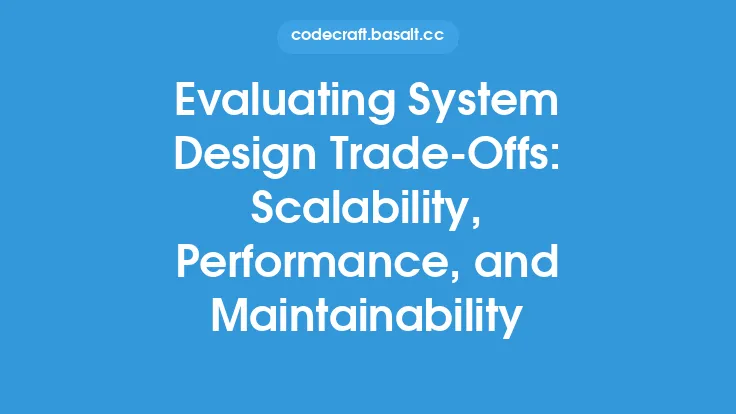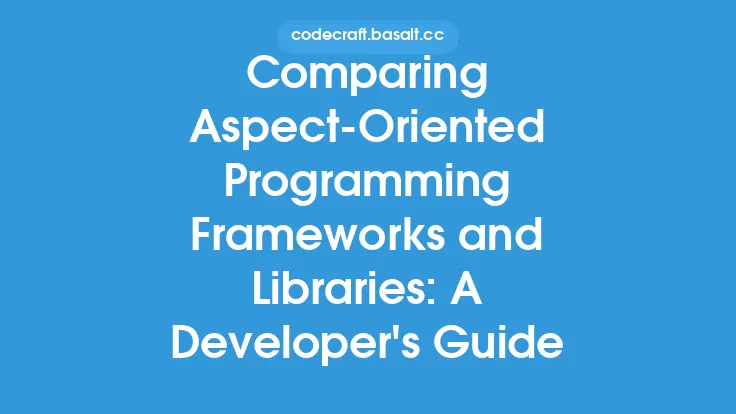When developing and deploying machine learning models, it's essential to have a comprehensive framework for evaluation to ensure that the models are effective, efficient, and reliable. Model evaluation is a critical step in the machine learning lifecycle, as it helps to identify the strengths and weaknesses of a model, compare different models, and select the best one for a given problem. A well-structured framework for model evaluation should consider various trade-offs and constraints, including computational resources, data quality, and problem complexity.
Introduction to Model Evaluation Frameworks
A model evaluation framework is a structured approach to assessing the performance of a machine learning model. It involves defining the evaluation criteria, selecting the appropriate metrics, and designing the evaluation protocol. A good framework should be flexible, scalable, and adaptable to different problem domains and model types. The framework should also consider the trade-offs between different evaluation metrics, such as accuracy, precision, recall, and F1-score, and the constraints imposed by the problem, such as limited data, computational resources, or strict performance requirements.
Key Components of a Model Evaluation Framework
A comprehensive model evaluation framework should include several key components, including:
- Problem definition: A clear definition of the problem to be solved, including the goals, objectives, and constraints.
- Evaluation metrics: A set of metrics that measure the performance of the model, such as accuracy, precision, recall, and F1-score.
- Data quality assessment: An evaluation of the quality of the data used to train and test the model, including factors such as noise, bias, and missing values.
- Model selection: A process for selecting the best model from a set of candidate models, based on the evaluation metrics and problem constraints.
- Hyperparameter tuning: A process for optimizing the hyperparameters of the selected model, to improve its performance on the evaluation metrics.
- Model validation: A process for validating the performance of the selected model on unseen data, to ensure that it generalizes well to new situations.
Trade-Offs and Constraints in Model Evaluation
When evaluating machine learning models, there are several trade-offs and constraints that need to be considered, including:
- Computational resources: The availability of computational resources, such as CPU, memory, and storage, can limit the complexity of the models that can be evaluated.
- Data quality: The quality of the data used to train and test the models can significantly impact their performance, and poor data quality can lead to biased or inaccurate models.
- Problem complexity: The complexity of the problem to be solved can impact the choice of model and evaluation metrics, and more complex problems may require more sophisticated models and evaluation protocols.
- Model interpretability: The interpretability of the model can be an important consideration, particularly in applications where transparency and explainability are critical.
- Scalability: The scalability of the model can be an important consideration, particularly in applications where large amounts of data need to be processed.
Evaluation Metrics and Protocols
The choice of evaluation metrics and protocols depends on the problem domain and the goals of the evaluation. Some common evaluation metrics include:
- Accuracy: The proportion of correctly classified instances.
- Precision: The proportion of true positives among all positive predictions.
- Recall: The proportion of true positives among all actual positive instances.
- F1-score: The harmonic mean of precision and recall.
- Mean squared error: The average squared difference between predicted and actual values.
The evaluation protocol should be designed to simulate the real-world scenario in which the model will be deployed, and should include factors such as:
- Training and testing datasets: The datasets used to train and test the model.
- Cross-validation: A technique for evaluating the model on multiple folds of the data, to ensure that it generalizes well to new situations.
- Hyperparameter tuning: A process for optimizing the hyperparameters of the model, to improve its performance on the evaluation metrics.
Best Practices for Model Evaluation
To ensure that the model evaluation framework is effective and efficient, several best practices should be followed, including:
- Define clear evaluation goals: Clearly define the goals and objectives of the evaluation, and ensure that they align with the problem domain and the goals of the project.
- Choose appropriate evaluation metrics: Choose evaluation metrics that are relevant to the problem domain and the goals of the evaluation.
- Use multiple evaluation metrics: Use multiple evaluation metrics to get a comprehensive understanding of the model's performance.
- Consider trade-offs and constraints: Consider the trade-offs and constraints imposed by the problem, and ensure that the evaluation framework is flexible and adaptable.
- Continuously monitor and evaluate: Continuously monitor and evaluate the model's performance, and update the evaluation framework as needed to ensure that it remains effective and efficient.
Conclusion
A comprehensive framework for model evaluation is essential for developing and deploying effective and efficient machine learning models. The framework should consider various trade-offs and constraints, including computational resources, data quality, and problem complexity, and should include key components such as problem definition, evaluation metrics, data quality assessment, model selection, hyperparameter tuning, and model validation. By following best practices for model evaluation, and continuously monitoring and evaluating the model's performance, it is possible to develop and deploy machine learning models that are reliable, efficient, and effective.





